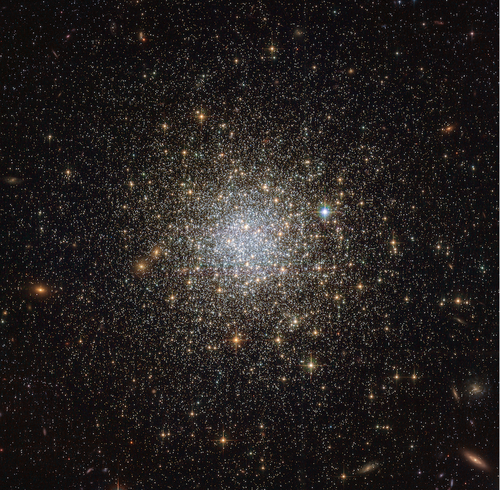
NGC 1466 (Credit: ESA/Hubble & NASA)
In the line of research of stellar physics, our group at DIFA investigates the internal structure of stars, their evolution, and their role in the formation and evolution of galaxies. Our activities integrate photometric and spectroscopic observations from the ground and from space with theoretical models of stellar interiors and atmospheres, supported by numerical simulations.
Among the main research areas there are:
1. Asteroseismology, which, through the analysis of stellar oscillations, allows us to probe the internal structure of stars and precisely determine their mass, radius, and age;
2. The study of star clusters, which is essential for studying stellar evolution and tracing the formation of galaxies. Their high densities make them ideal laboratories for studying stellar dynamics, the formation and evolution of binary systems, and chemical enrichment processes. Their relevance extends across stellar physics and cosmology, thanks to their observability over a wide redshift range;
3. The study of the Milky Way and the Local Group, aimed at reconstructing their formation history through analysis of the dynamical and chemical properties of stellar populations.